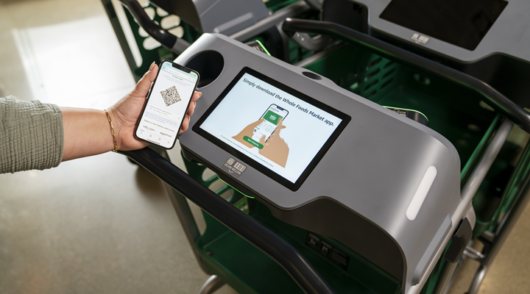From 2020-22, retailers took the opportunity to accelerate their digital transformations. For many, this meant bringing forward investments in e-commerce to sustain a level of sales activity. As economies across the world reopen and store foot traffic enjoys a healthy rebound, many retailers are turning their attention to what they should do next with the investments that were made during the pandemic.
While the percentage year-on-year growth in sales made through online channels has fallen since the heights achieved during the pandemic, we continue to see a ‘locked-in’ step change in the volume of sales being made online: that means the investments made to expand the utility and reach of this channel continue to be a valuable base for retailers.
Australia Post’s 2022 e-commerce industry report told us that online retail sales represent around 20 per cent of total retail sales, with shopping habits being reformed during the pandemic. Shopify declared Australian online shoppers’ 2022 Black Friday sales fourth globally and November 2022 was the biggest month in Australia’s online shopping history. However, over the 12-month period from November 2021 to November 2022, online purchases were down 3.8 per cent due to lockdown-driven spending in 2021.
All this shows e-commerce has become critical to any retailer’s sales strategy and there are significant benefits for brands. Firstly, e-commerce has enabled many brands to attract customer segments to their store that may have never previously considered that retailer.
Retailers who have invested in their online visibility, search functions and excellent digital user experiences have seen their share of wallet amongst other dormant segments expand, in some cases with impressive results. Brands have started to scale their size and appeal impressively by leveraging e-commerce to reach beyond their niche appeal to broader and more diverse customer groups.
Secondly, having a strong e-commerce channel enables customers to find products online that they may have struggled to locate in-store. This is particularly true with department stores and discount department shops, where the efficiency is created by seeking out niche brands or specific products that might be underrepresented in mainstream retailers. Benefits to the retailer are not just the revenue this brings in, but the positive association forged through this type of strong brand experience.
Thirdly, e-commerce should be seen as a channel that can drive shoppers in-store for intentional purchases. One example is at Michael Hill, which leverages its online platform to simplify the shopping experience for jewellery, allowing customers to reserve the products they are most interested in and create a time for a personal, in-store shopping consultation. This is a strategy of ensuring the online and offline sales experiences are integrated, particularly in premium product categories like jewellery, where there is a mental spending limit online. Customers are more likely to trade up when they transition to the in-store environment.
It’s all just commerce now
With retailers using the online channel to promote engagement across the entire buying journey, the distinction between the online store and physical stores has become increasingly blurred. We are seeing the role of e-commerce in a number of distinct parts of the journey and motivations to shop online have
moved far beyond convenience alone:
1. Awareness
Online channels should be leveraged to promote broader awareness of their products and services to potential customers across multiple platforms. The retailer’s website is merely the start of a customer’s shopping journey today. Social media marketing in particular has grown in terms of its reach and impact, with an estimated 75 per cent of internet users reporting that they use social media to research products prior to purchase, either online or in-store.
2. Education
As the majority of consumers turn to the internet to compare products prior to making purchases, retailers are also using this channel to educate their target customers on the benefits of their products over the competition. Online channels are proving to be an excellent platform through which retailers can provide customers with information-rich materials, such as sustainability alignment in response to the trend towards more conscious and mindful consumption.
3. Sales
Mobile commerce has become the norm and social commerce has grown, especially as Gen Z become young adults with their own spending power. Further, with the increasing awareness of cybersecurity concerns worldwide, establishing trust with customers to give them the confidence to transact online has become more important than ever, leading to greater online penetration by trusted and known brands than unknown or generic ones.
4. Customer service
This is often a buyer’s primary point of contact with a brand. Customers expect to be able to ask questions before, during and after a purchase and that help is provided quickly. The experience that they have during these interactions is often a key determinant of whether a sale is completed, or a repeat purchase is made.

While these trends are broadly applicable, they are not universal. There are differences between categories, retailers and customer segments. For example, in household goods, we have seen good penetration of online sales and the rise of pureplay retailers with a loyal following, due to strong user experience and detailed product information. In contrast, the grocery category has experienced a far more blended approach to online and in-store purchases, with customers regularly buying everyday items online while less common purchases and fresh food continue to be the domain of in-store visits. Sophisticated retailers understand where the differences are for their target customers within the brand’s specific categories and will optimise each channel accordingly for a seamless commerce experience.
Success requires organisation-wide agility and focus
Delivering great customer experiences across the entire buying journey is challenging. Engaging experiences that attract customers to the website or the store will only go so far.
The ability to execute on the basic sales and fulfilment transaction itself is also important. A lack of payment options, a lack of focus on what’s driving cart abandonment, limited stock visibility and poor returns experiences are just a small sample of the reasons that customers spend less than they otherwise might online.
Addressing these issues to capture the full potential of a given sales interaction will typically require deep change that has implications for store operations, the entire supply chain, human resources and finance. We believe the retailers that will genuinely thrive tomorrow will understand that success requires agility across the entire organisation, not just in a specific channel. Some success will come from optimising each channel to meet the distinct needs of specific customer segments in that channel. Lasting and sustainable success, however, will also require the business to be agile so that the entire organisation can work harmoniously to deliver on an end-to-end customer experience across all integrated channels.
Lisa Bora, National Firmwide Lead Partner – Retail & Leisure, KPMG Australia; Phil Welch, Retail Operations, KPMG Australia; and Rebecca Alexander-Head, Client Director – Retail, KPMG Australia also contributed reporting.
This article was originally published in the 2023 Australian Retail Outlook, powered by KPMG. Download here.






